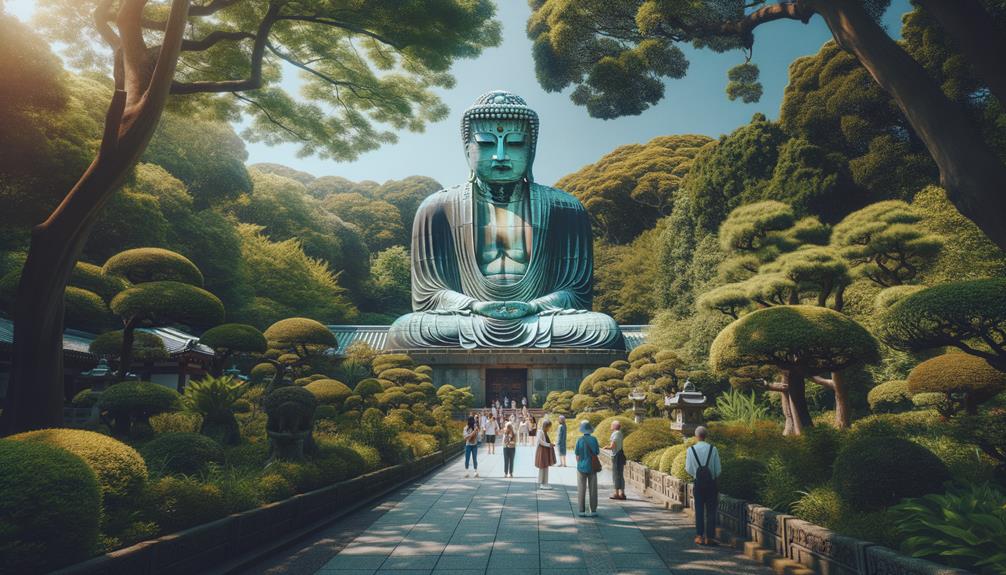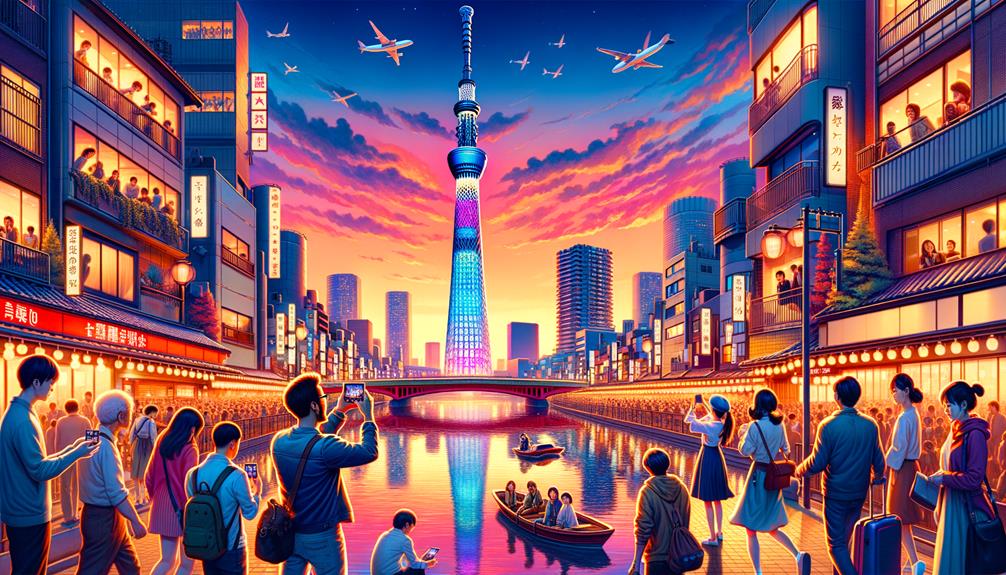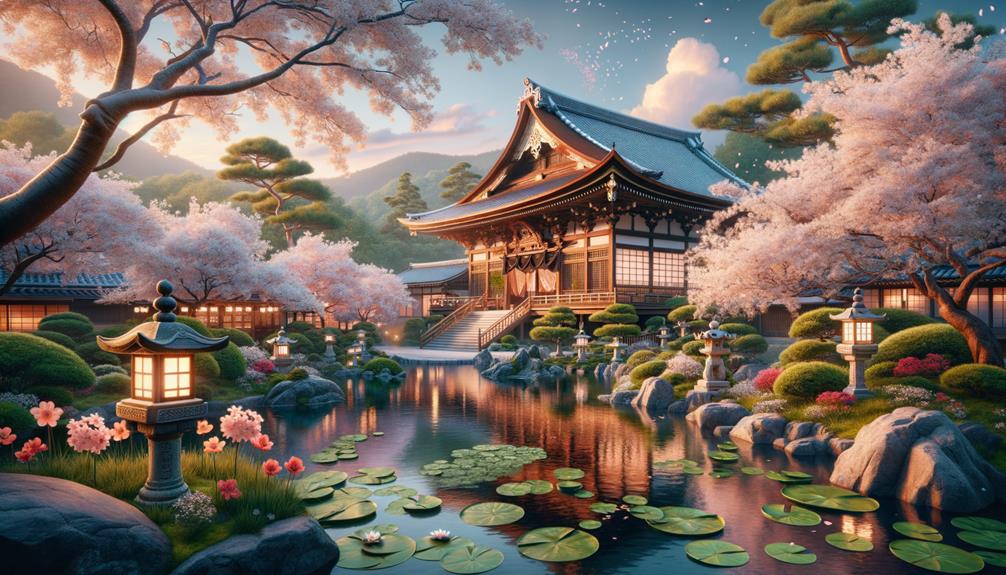When I first walked up to the Kamakura Great Buddha at Kotoku-in Temple, I was immediately struck by its size and calm presence, towering at 13.35 meters. The copper statue, with its peaceful face and detailed craftsmanship, seemed to have stories of resilience and deep culture etched into it. As I strolled around the temple grounds, the serene atmosphere felt almost magical, a stark contrast to the busy streets just outside. Stepping inside the hollow statue, a rare treat, gave me a deeper appreciation for the centuries of history and skill that went into its creation. There's something about this place that makes you reflect on its legacy and the untold stories it holds.
Transportation and Accommodation
Planning a trip to the Kamakura Great Buddha is pretty straightforward, thanks to the convenient Enoden railway line. The Enoshima Electric Railway, or Enoden, is a quaint little line that winds through scenic coastal towns, linking Kamakura with Enoshima and Fujisawa. Riding the Enoden is a pleasant experience in itself, offering views of the ocean and charming neighborhoods.
Once you get off at Hase Station, you'll be pleased to find that the Great Buddha is just a 5-10 minute walk away. The stroll is enjoyable, taking you through cozy streets lined with local shops and eateries, creating a welcoming and relaxed atmosphere.
Kamakura has plenty of accommodation options to suit different preferences and budgets. Whether you're after a budget-friendly guest house, a mid-range hotel, or a luxury retreat, you'll find something that fits your needs. I chose a charming guest house, which gave me a more personal and immersive experience of the local culture. With so many choices, you can tailor your stay to match your travel style.
Visiting the Great Buddha
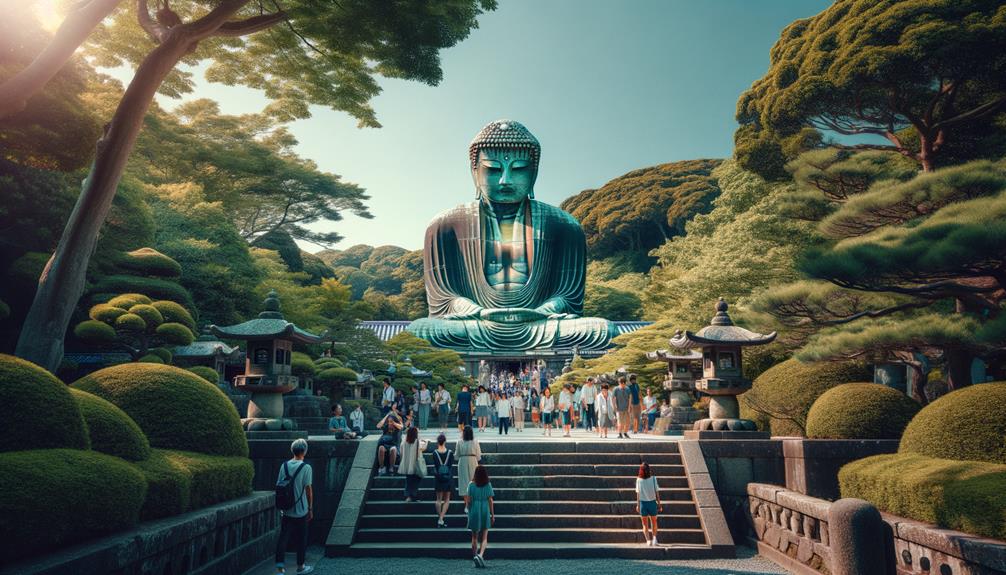
When I walked onto the grounds of Kotoku-in Temple, I was struck with awe as the Great Buddha of Kamakura loomed into view. Its calm expression seemed to radiate a timeless peace. This huge copper statue of Amitabha Buddha stands 13.35 meters tall and weighs 93 tonnes. It's incredible to think it was originally cast in the 13th century.
As I moved closer, I couldn't help but admire the detailed work on the Buddha's robe and serene face. The temple grounds are tranquil, with a gentle breeze and the soft rustling of leaves adding to the peaceful vibe.
One of the highlights of my visit was stepping inside the hollow statue. You can go inside during specific hours, and it offers a unique look at the craftsmanship and scale of this historic piece. Thinking about the artisans from centuries ago who worked on this enormous project filled me with respect.
The Great Buddha has faced many challenges, including the destruction of the surrounding temple buildings, highlighting its resilience and cultural importance. Standing before it, I felt a deep connection to the countless visitors who have been inspired by this majestic symbol of Kamakura over the ages.
Online Resources
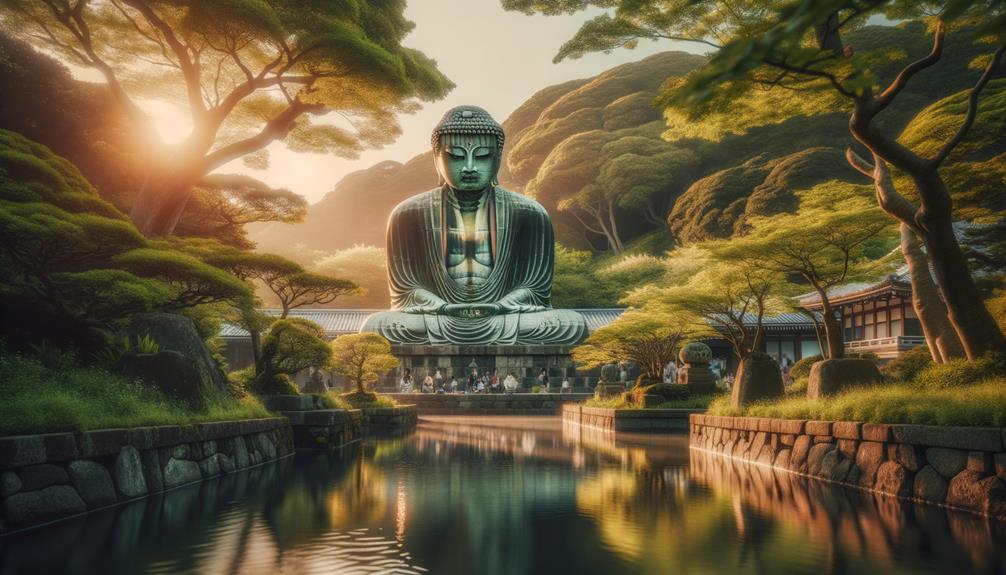
When I was planning my trip to see the Kamakura Great Buddha, I found the temple's official website super useful. They had clear info on visiting hours, rules about taking photos, and the best ways to get there using public transportation. The travel tips and detailed info made my visit smooth and stress-free.
Official Temple Website
When I checked out the official website of Kotokuin Temple, I found all the information I needed to plan my visit to the Great Buddha in Kamakura. The website covered everything from temple hours and admission fees to visitor guidelines, making my planning process straightforward. I was particularly relieved to find clear details on photography rules, which helped me take photos respectfully and legally.
I was excited to learn from the site that you can actually go inside the Great Buddha statue—something I wouldn't have known otherwise. There were also tips on nearby attractions, making it easier to plan a full day in Kamakura.
The accessibility information was especially helpful, ensuring that everyone, regardless of physical ability, could enjoy the temple grounds. I also appreciated the clear guidelines on commercial photography, drone use, and pet policies, which helped make my visit smooth and hassle-free. Thanks to the official temple website, I felt well-prepared and able to fully enjoy the cultural experience at Kotokuin Temple and its impressive Great Buddha.
Travel Planning Tips
One great resource I found for planning my visit to the Great Buddha in Kamakura was the official Kotokuin Temple website. It had all the details I needed, from admission fees to photography guidelines, making my trip much smoother.
Before heading out, I checked the admission fees and operating hours. The site even mentioned extra fees if you wanted to enter the statue's interior, which I highly recommend for a unique view. Knowing the temple's photography rules ahead of time helped me take pictures respectfully.
The website also provided timely updates on any changes to visiting hours, which was really helpful given my tight schedule. Getting to the temple from Kamakura Station was easy thanks to the clear directions provided online.
Here's a quick reference for key trip details:
| Details | Information |
|---|---|
| Admission Fees | ¥200 for adults, ¥150 for children |
| Operating Hours | 8:00 AM – 5:30 PM (varies seasonally) |
| Interior Entry Fee | ¥20 |
| Photography | Allowed with restrictions |
| Nearest Station | Kamakura Station |
These online resources made my visit to the Great Buddha both easy and enlightening, letting me focus on enjoying the serene atmosphere of this iconic temple.
Information Accessibility Online
Visiting the Great Buddha in Kamakura made me realize how useful online resources are for a great travel experience. Before my trip, I checked out the official Kotokuin Temple website, which had tons of helpful information. Knowing the operating hours and admission fees ahead of time helped me plan my day smoothly. The detailed visitor guidelines, covering things like drone restrictions and photography rules, were also really handy.
Reading about the Great Buddha's history online added so much to my visit. I discovered that this impressive bronze statue, standing over 13 meters tall, has been a Kamakura landmark since the 13th century. This background made me appreciate the statue's serene expression and grand size even more.
Online resources also gave me practical tips on accessibility and parking, making my trip hassle-free. Finding nearby attractions through these sites helped me put together a more detailed itinerary. It's amazing how a few clicks can provide so much useful information. Using these digital tools, I felt well-prepared to fully enjoy the cultural beauty of Kotokuin and its iconic Great Buddha.
Hotel Features
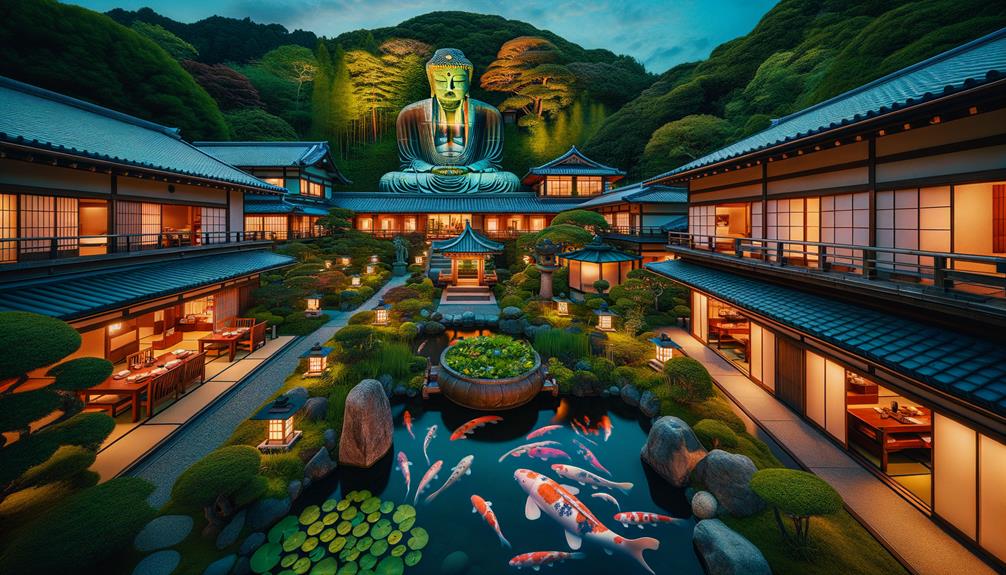
When I visited Kamakura to see the Great Buddha, I was really impressed by the variety of places to stay. Whether you're looking for a budget-friendly guest house with a cozy feel or a luxurious hotel with top-notch comfort, you'll find something that suits your needs. I especially liked the amenities like free WiFi and air conditioning, which made my stay even better.
Budget-Friendly Accommodation Options
If you're headed to Kamakura and want to stick to a budget, there are plenty of great options. Guest houses and affordable hotels offer everything you need, like free WiFi and air conditioning, and they place you close to the city's main attractions. When I visited, I stayed in a charming guest house just a short stroll from the Great Buddha, that impressive bronze statue of Amida. Being so near to such a historic site without spending a fortune was fantastic.
Many of these budget accommodations also provide handy services like luggage storage and a 24-hour front desk, making my stay stress-free. I loved that there were different types of rooms to choose from, whether you're looking for a dormitory or a private room. The shared showers and communal lounges were great for meeting other travelers, adding a nice social element to the trip.
Staying in these affordable places let me dive into the local culture without overdoing it on expenses. Whether you're traveling alone or with a partner, these spots offer a good mix of comfort and convenience. Plus, waking up near the Great Buddha every day felt like a mini-adventure in itself.
Luxury Hotel Amenities
Staying at a luxury hotel in Kamakura feels like a special retreat. Every detail, from the elegant decor to the personalized service, adds a touch of class to the experience. The moment I walked into the lobby, I was taken by the ambiance—a perfect mix of traditional Japanese aesthetics and modern style. The staff greeted me warmly and handled my luggage and check-in with smooth efficiency.
My room was a sanctuary. The spacious suites with ocean views and private balconies provided a peaceful escape from the busy world outside. The luxurious bedding was so inviting, I couldn't wait to relax in it. Each morning, I enjoyed the high-quality toiletries, making my routine feel extra pampered.
The amenities were excellent. Free WiFi and air conditioning ensured comfort, while the on-site restaurant offered delicious upscale dining options. After a day of exploring, I'd return to the spa for a relaxing massage or take a dip in the serene swimming pool.
Luxury hotels in Kamakura aren't just places to stay—they offer an immersive, elegant experience that meets every need and desire.
Travel Tips
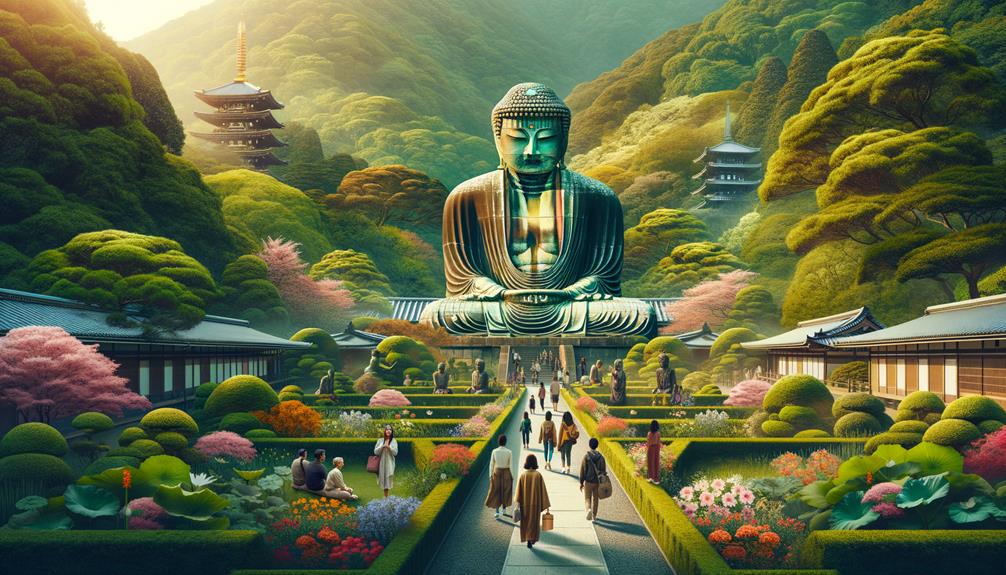
For a truly memorable visit to the Kamakura Great Buddha, I suggest heading there early in the morning. This way, you can enjoy the peaceful surroundings of Kotoku-in Temple before it gets crowded. Standing at an impressive 13.35 meters, the bronze statue of the Buddha is a sight to behold. Wandering around the temple grounds in the quiet hours is a special experience, offering a unique sense of tranquility.
One of the standout moments for me was stepping inside the hollow statue. It's fascinating to see the detailed craftsmanship from the inside and get a better sense of the statue's massive scale, weighing in at 93 tonnes. Just keep in mind that photography isn't allowed inside, so take the opportunity to soak it all in and enjoy the moment.
Comfortable shoes are a must since there's a fair bit of walking and the paths can be uneven. A lightweight scarf or hat can also come in handy, given that much of the area is open to the elements. And, of course, it's important to be respectful of the site's cultural and spiritual significance—it's more than just a tourist spot.
Historical Background
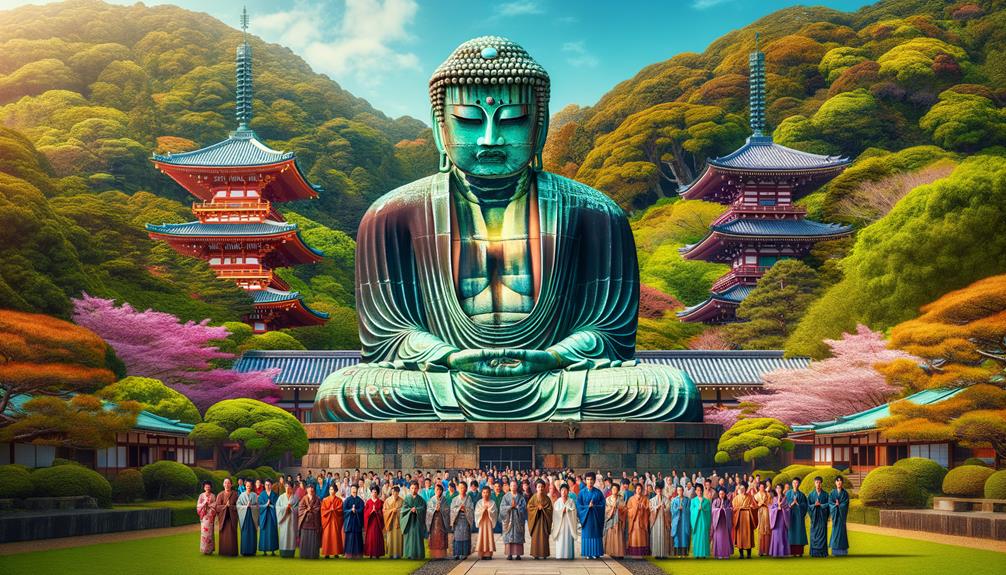
As I strolled through the peaceful grounds of Kotoku-in Temple, I couldn't help but admire the rich history represented by the Kamakura Great Buddha. This massive bronze statue of Amitābha, cast in the 13th century, stands 13.35 meters tall and weighs 93 tonnes. Its sheer size grabs your attention right away, but the story behind it is even more fascinating.
Originally, a wooden Buddha statue stood here, but it was damaged in 1248. This led to the decision to create a more durable bronze statue, giving us the Great Buddha we see today. Walking closer, I noticed how the statue has stood the test of time, enduring various natural disasters that have hit Kamakura over the centuries. Each mark and patina on its surface speaks of resilience and endurance.
Stepping inside the hollow interior of the Great Buddha, I felt deeply connected to the past. This isn't just a statue; it's a tribute to the creativity and spiritual dedication of its creators. The experience, combining history with personal reflection, left me in awe of the cultural legacy that continues to inspire reverence in everyone who visits.
Nearby Attractions
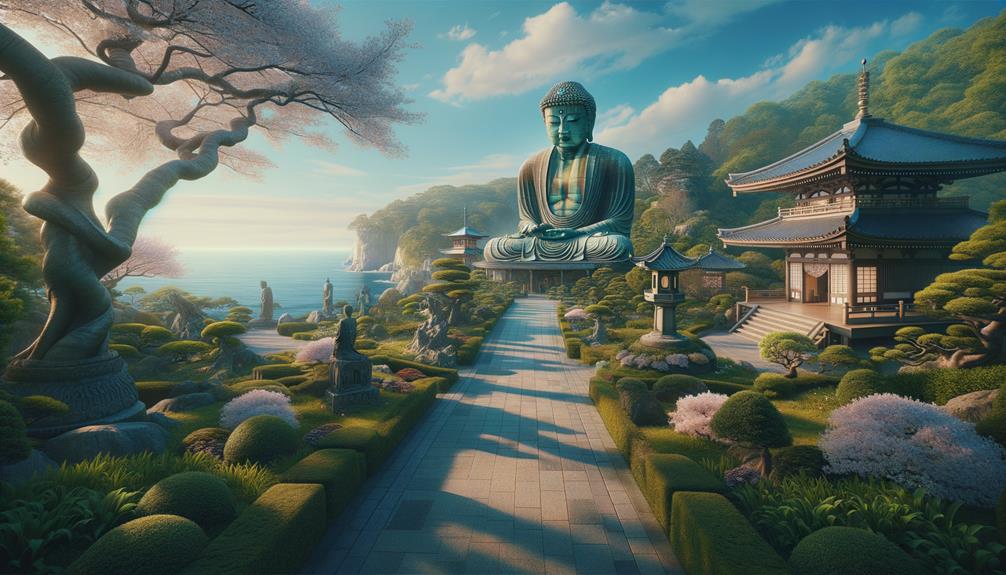
When I visited the area around the Kamakura Great Buddha, I found some amazing cultural spots that really enriched my experience. Just a short walk away, I stumbled upon Tsurugaoka Hachimangu, a Shinto shrine with its impressive torii gates and peaceful ponds. The place was bustling with activity, and I was fortunate to catch a traditional ceremony that showcased the local culture beautifully.
Next, I headed to Hasedera Temple, famous for its stunning views of Kamakura. The temple grounds were absolutely enchanting, featuring a cave filled with statues of Benzaiten and countless tiny Jizo figures, each carrying silent prayers and wishes. The journey on the Enoden Line to get there added a nostalgic charm to my trip.
Finally, I visited Hokokuji Temple's bamboo grove, which felt like stepping into another world. Walking among the lush green bamboo was incredibly serene. I also stopped by the tea house on the grounds, where sipping matcha while surrounded by the rustling bamboo was a peaceful highlight.
These nearby attractions, each unique in their own way, made my visit to the Great Buddha at Kamakura even more memorable.
Frequently Asked Questions
How Do I Go to Great Buddha of Kamakura?
If you want to visit the Great Buddha of Kamakura, I suggest taking the Enoshima Electric Railway from Kamakura Station. It's a beautiful route with lots to see. You can also drive there using the Yokohama-Yokosuka Road. It's easy to get to and well worth the trip to see this impressive and peaceful statue.
How Much Does It Cost to Go to the Great Buddha of Kamakura?
It's just 300 yen for adults and 150 yen for kids to visit the Great Buddha of Kamakura. If you want to go inside, there's an extra fee. Who knew enlightenment could be so affordable? Even ancient statues need some upkeep!
Where the Buddha Resides in Kamakura?
The Buddha can be found at Kotoku-in Temple in Kamakura. I was amazed by the massive bronze statue, feeling a strong connection to its historical and cultural importance. The fact that it's outdoors only adds to its peaceful majesty.
What Country Would You Visit to See the Great Buddha of Kamakura?
To see the Great Buddha of Kamakura, I'd head to Japan. The country's rich culture and history have always intrigued me. Strolling through Kamakura, I'd soak in the peaceful atmosphere and the deep spirituality of this famous statue.

